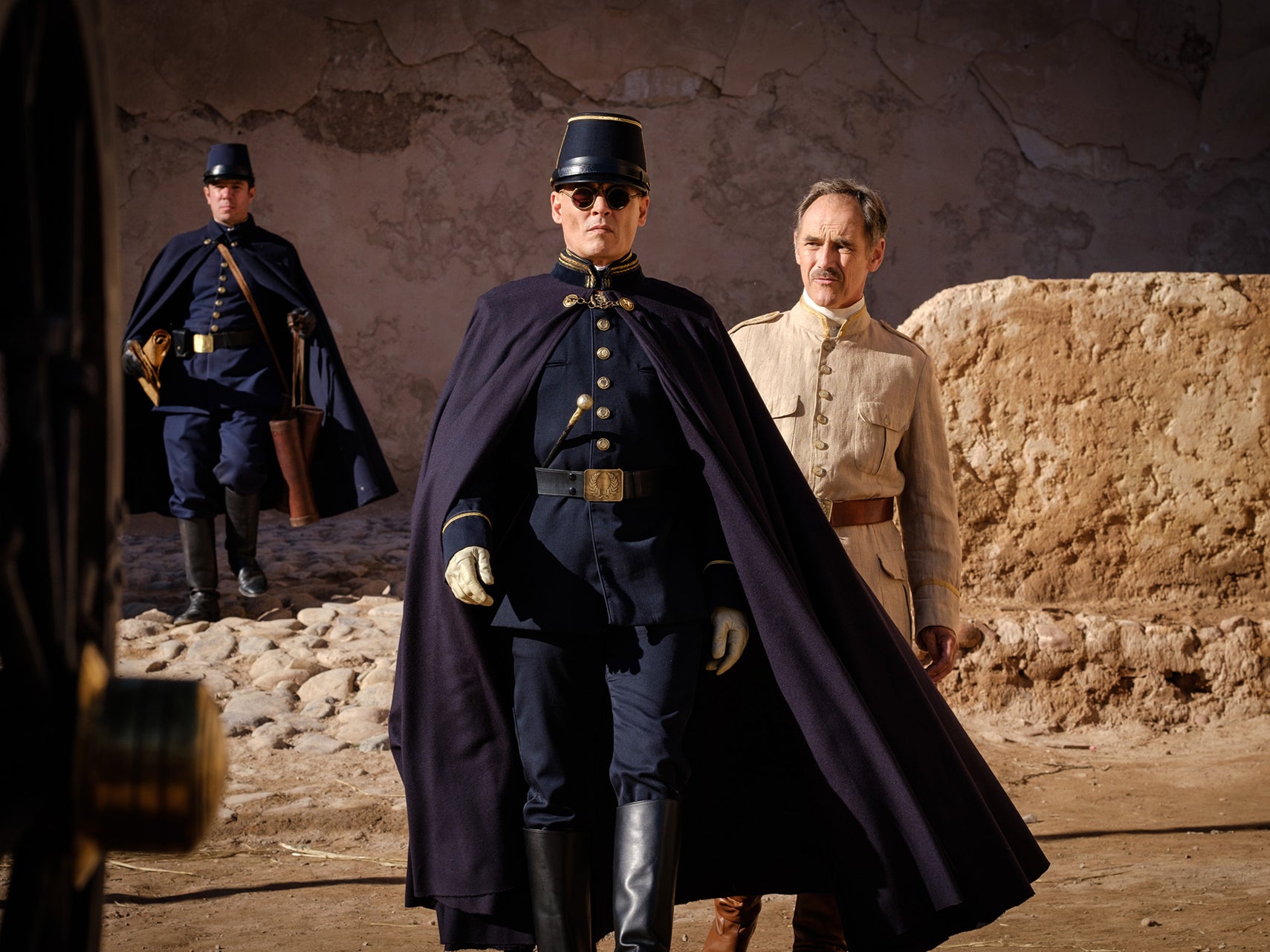Waiting for the Barbarians, review: Sand-swept colonialism allegory is too vague to make an impact
Third feature from Colombian auteur Ciro Guerra pits Mark Rylance’s weary hero against a caped, steampunk-esque Johnny Depp

Your support helps us to tell the story
From reproductive rights to climate change to Big Tech, The Independent is on the ground when the story is developing. Whether it's investigating the financials of Elon Musk's pro-Trump PAC or producing our latest documentary, 'The A Word', which shines a light on the American women fighting for reproductive rights, we know how important it is to parse out the facts from the messaging.
At such a critical moment in US history, we need reporters on the ground. Your donation allows us to keep sending journalists to speak to both sides of the story.
The Independent is trusted by Americans across the entire political spectrum. And unlike many other quality news outlets, we choose not to lock Americans out of our reporting and analysis with paywalls. We believe quality journalism should be available to everyone, paid for by those who can afford it.
Your support makes all the difference.Dir: Ciro Guerra. Starring: Mark Rylance, Johnny Depp, Robert Pattinson, Gana Bayarsaikhan, Greta Scacchi. 15 cert, 113 mins
Waiting for the Barbarians is the most sweeping of director Ciro Guerra’s portraits of colonial intrusion. Both his previous films, Embrace of the Serpent (2015) and Birds of Passage (2018, co-directed with Cristina Gallego), explored the west’s destructive influence on indigenous Colombian culture, though this is his first in the English language. Here, Nobel Prize winner JM Coetzee adapts his own 1980 novel for the director. The story draws from the author’s experiences in apartheid-era South Africa, set instead in a fictional desert country gripped by colonial rule.
The place is undefined. Its people are nameless. But the brutality remains the same. The film was shot between Morocco and Italy, and cinematographer Chris Menges bathes each frame in sandy, yellow tones. The soldiers are dressed in identical crisp linen uniforms, which at least mark them out as European in origin. But the local people, and the language they speak, are distinctly Mongolian. Everything suddenly becomes an allegory of colonialism, not colonialism itself. Characters move like pawns. It all feels a little vague and imprecise.
Mark Rylance plays a man known only as “The Magistrate”, a civil servant who tends to his post with diligence and mercy, free from intervention by what is called “The Empire”. His relatively peaceful coexistence with the local nomads is ruptured by the sudden arrival of Col Joll (Johnny Depp), sent to investigate rumours of a planned uprising. Joll arrives in his pitch-black cape, with circular sunglasses perched permanently on the end of his nose and another of Depp’s stiffly aristocratic British accents. It’s hardly a subtle look – he’s more suitably dressed to drive a giant mechanical spider across the American west than oversee a colonial outpost, so oddly steampunk is his attire.
But, under the uniform, there is pure, untethered monstrousness. He tortures the locals, convinced that “pain is truth, all else is subject to doubt” and that if he brutalises them enough, they’ll tell him what he wants to hear. He’ll be able to go back to his superiors with news that rebellion’s in the air. Later, his snivelling crony (Robert Pattinson, who does his best with a slight role) turns up to spew more evil into the atmosphere. The Magistrate watches on, Rylance blending wild-eyed and stuttering disbelief with a withering sense of humanity. He shakes like a greyhound, his nervousness the most human touch of Guerra’s film.
The Magistrate’s moral awakening against the sins of the Empire is triggered by something far more simplistic than an internal reckoning – the grace of a beautiful woman, played by Gana Bayarsaikhan. She is not given the dignity of a name or a title, but is simply credited as “The Girl”. The Magistrate discovers her cowering in some corner of the outpost, her ankle broken and her eyes scarred by Joll and his men. Christ-like, he washes her feet. He asks her again and again whether she wants to stay or go home – she repeats that she does not want to be here. He reacts humbly and dutifully. He brings her back to her people and, in return, faces the most brutal of punishments.
The Magistrate eventually realises that his fixation on her, however chaste, does not befit a saviour. But the film never truly interrogates his own complicity in the regime. It’s enough for our hero simply to distance himself from those he serves so, at the end of the day, when all empires have fallen, he can walk away unbothered and unmarked. It’s this lack of specificity – geographical, historical, and moral – that makes Waiting for the Barbarians feel ultimately airless. Its declarations are too easy, its conclusions too neat.



Join our commenting forum
Join thought-provoking conversations, follow other Independent readers and see their replies
Comments